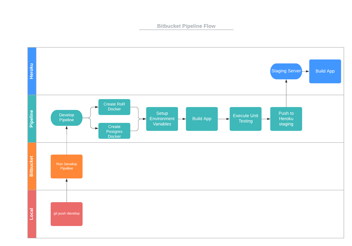Three Things I Wish I Knew Before Going into this Industry
Nathan's Advice transitioning from college to the O&G Industry
There is an anecdote that likes to be retold in some circles, sometimes with minor differences in the details. As satisfying as it would be to attribute this anecdote to a specific person, it’s rare that stories like this have a single point of origin. Nevertheless, it’s a fun story that deserves its time in the limelight:
In the middle of his lecture, a mathematician noted that, based on the arguments that had been presented, it was obvious to see how a particular conclusion could be made. At this point, he paused and began to pace back and forth and, eventually, stepped out of the lecture hall. After several minutes, he stepped back in and said, “I have thought about it and it is obvious!” and then resumed his lecture where he had left off.
This story pokes fun at mathematicians and how susceptible they can be to tunnel vision. Of course, mathematicians are not the only ones who lose sight of the big picture. Anyone focusing on a specialized task is at risk for missing the minor (and, sometimes, not-so-minor) details that are outside of their field of vision. The scope of this phenomenon can be small (like missing a meal, because you’re too focused on organizing your Hot Wheel collection) or it can be less small (like saying an inappropriate joke at a funeral, because you’ve spent so much time watching those zany T.V. shows that you’ve forgotten how to behave like an adult.)

One of my more interesting experiences with tunnel vision was when I finished attending college and began working in industry as an Electrical Engineer. The transition from an academic environment into the 'real world' allowed me to see some of the blind spots I had developed over the years of being a book-learnt student. The purpose of sharing some of these blind spots is to highlight some pieces of information which typically are only briefly mentioned in an academic setting but, in practice, are extremely significant elements of engineering.
- Datasheets. Datasheets are an all-too-often underutilized wealth of knowledge. Firstly, they provide all the specifications for a given component, such as operating conditions, theory of operation, physical dimensions, etc; this fact alone establishes datasheets as critical to the design of any system. As dry as it may be, making the commitment to read and sufficiently understand a datasheet upfront often pays off with less time and money spent on debugging and making hardware revisions on the backend; it also helps in avoiding silly mistakes such as choosing a MOSFET with a gate-source threshold that is higher than the driving signal. Secondly, many datasheets also provide reference designs which are especially invaluable if it’s for a part that you have never used. Often, these reference designs will become the basis of a circuit’s initial revision. Why do the work when someone else has already done it for you!
-
Simulations. Datasheets will help in finding appropriate components and will often even help in putting together an initial circuit revision. However, before building the thing, it would be nice to verify that the circuit works as expected or to see whether the design is even in the right ballpark. Depending on the project, it is not inconceivable that a bulk of the time might be spent in running simulations. Not only can simulations, to some degree, validate a design, they can also be used to analyze its behavior and guide the optimization process. Simulations can provide feedback on a design’s stability, it’s power distribution, it’s small signal response, it’s response to dynamic loads, and several other aspects related to a circuit’s characteristics. Generally, however, the purpose of running simulations is certainly not to produce a flawless design (as neat as that would be), but rather to minimize the number of fixes that will need to be implemented in future revisions.
-
Spreadsheets. In general, good organization skills go a long way in successfully developing a project. In engineering, these skills don’t just pertain to organizing materials, but also to organizing data. All too often, there is a temptation to just jot numbers down in a notebook and leave it at that. There is nothing wrong with initially jotting numbers down in a notebook, however, it is imperative that those numbers make their way into a format that is clear and concise, sooner better than later. Spreadsheets should be used liberally: If you’re characterizing a power supply and need to quantify its performance, make a spreadsheet; if you’re performing functional tests on multiple units and need to track the results, make a spreadsheet; if you’re estimating time and cost for a project, make a spreadsheet. As the scope of a task begins to increase, it becomes more and more necessary to create a spreadsheet and, at a certain point, it becomes unavoidable. However, the mistake made by many is in thinking that a task is too small for a spreadsheet and that their memory or a scratch-pad will suffice. It usually won’t. Make a spreadsheet.
One thing that should be mentioned is that, unfortunately, there are some poorly written datasheets. The team and I have had instances where some feature descriptions were too vague and we ended up having to use a ‘best guess’ approach. Even for non-critical features, the ‘best guess’ approach is uncomfortable, but we would be lying if we said we never use it.
Truth be told, going to an engineering school isn’t really about developing good design practices so much as it is about learning the basic building blocks. The ideas and inherent values of datasheets, simulations, and spreadsheets are not lost in academia – it’s just that the focus of an academic environment is such that they usually end up taking a back seat to other things like getting homework done on time, preparing for exams, and using student discounts to get cheap pizza. However, in practice, engineers are not typically given a set of parameters for a component, they have the find them in the datasheets; when time and money are being put into manufacturing a circuit, the design needs a level of validation beyond hand-written calculations; and spreadsheets are not just for calculating the minimum grade you need on the final to bump your final grade in the class up to a C, but they are an invaluable tool for keeping any amount of information organized. It doesn’t take working in the ‘real world’ very long to realize the paramount importance of these design tools – I’ve thought about it and it’s obvious.




